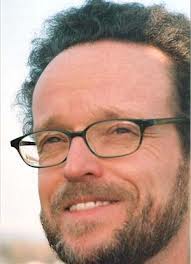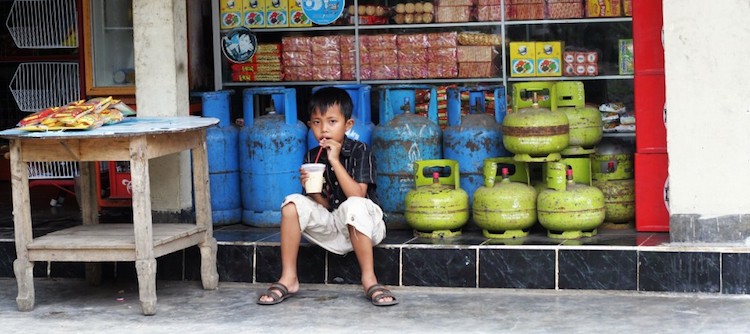NexThought Monday – A Better Way to Pay for R&D? (Part 1): The plan to enable everyone to buy drugs at manufacturing cost
Editor’s note: A decade ago, Professor Thomas Pogge, a Yale University academic and ethicist, developed the basic concepts of the Health Impact Fund (HIF), which proposes a market-based way to pay for pharmaceutical innovation.
Here’s how it would work. Any pharmaceutical firm could register a new drug with the fund. Registration would obligate the firm to provide that drug at cost anywhere it’s needed; therefore, the firm wouldn’t receive normal profits from the sale of the drug. Instead, the firm would be rewarded based on the HIF’s assessment of the actual health impact – potentially measured in quality-adjusted life years (QALYs) – of the drug. [1] The financing would come from participating governments and other donors.
Below, in part one of our interview, Pogge discusses the origins of the fund and its potential impact, which was only highlighted by the recent Ebola epidemic. In part two, he’ll discuss how the fund might finally gain the political momentum it needs to be implemented. For more about market-shaping as a way to get medicine to those who most need it, check out NextBillion Health Care’s market dynamics initiative and our recent e-book compilation.
Kyle Poplin: When and how did the idea for the Health Impact Fund develop?
Thomas Pogge: I was invited to spend a year at the National Institutes of Health in their Department of Clinical Bioethics, then headed by Dr. Ezekiel Emanuel. Wanting to do something my colleagues there would find useful, I wrote three essays on health (in 2004), one of which conceived the basic idea of the Health Impact Fund (HIF). People found this idea promising, so I co-convened – with James Orbinski, Mira Johri and others – a conference in Montreal to think more deeply about how such a system might best be designed so as to ensure better access to important medicines. At that conference, I met the economist Aidan Hollis, who had been climbing the same mountain from another side. We decided to join forces and have been collaborating ever since, with a great deal of help also from the two advisory boards of our nonprofit organization Incentives for Global Health and from many friends in academia, industry, government and intergovernmental and nongovernmental organizations. The basic ideas are still being elaborated and refined, and we hope to present our current thinking in a jointly authored book (Oxford University Press) in the near future.
KP: How big would the fund have to be to work as envisioned and how soon could it start functioning if the commitments were secured? Who would orchestrate the fund?
 Thomas Pogge (right): We believe that annual reward pools of $6 billion are a reasonable minimum. If the rewards get much smaller than this, then the health impact assessment costs will eat up too large a share of the HIF’s budget. Also, with smaller pools, a single medicine entering the fund or leaving it might have a substantial effect on the reward rate (each year, the $6 billion is divided among all registered medicines according to the health gains that each drug has achieved). With $6 billion, we expect to attract about 25 medicines, with two-three coming in each year and two-three dropping off each year (any registered medicine stays on the HIF for 10 years). So any one medicine coming in or dropping off won’t have a large effect.
Thomas Pogge (right): We believe that annual reward pools of $6 billion are a reasonable minimum. If the rewards get much smaller than this, then the health impact assessment costs will eat up too large a share of the HIF’s budget. Also, with smaller pools, a single medicine entering the fund or leaving it might have a substantial effect on the reward rate (each year, the $6 billion is divided among all registered medicines according to the health gains that each drug has achieved). With $6 billion, we expect to attract about 25 medicines, with two-three coming in each year and two-three dropping off each year (any registered medicine stays on the HIF for 10 years). So any one medicine coming in or dropping off won’t have a large effect.
If we have the funding lined up, we could begin the scheme in about three years. New medicines could not, to be sure, be developed so quickly. But there are suitable medicines already under development, medicines that might well earn more in the HIF than if sold at patent-protected high prices. Those medicines would be registered, with the immediate benefit that poor patients would get much better access to them. Not only would such medicines then be sold at manufacturing cost, they would also be marketed to poor patients with much greater care as the rewards depend on how many patients are actually reached and on what health gains these patients will derive from the treatment.
Regarding the administration of the HIF, we have been in talks with both the Global Fund to Fight AIDS, Tuberculosis and Malaria and the World Bank. There is much to be learned from how the Global Fund is organized as a corporation under Swiss law outside the UN system. We are envisioning a similar structure for the HIF, and we would affiliate with the Global Fund administratively in order to realize various obvious economies. There is a nice precedent for this: Affordable Medicines Facility-malaria (AMFm) is hosted and managed by the Global Fund in Geneva. The World Bank is taking care of the Global Fund’s funding and finances; and again we would want to follow this example. The World Bank has the experience and connections needed and its involvement would reassure our partner countries and organizations that the HIF’s reward pools are managed with honesty, integrity, transparency and efficiency.
KP: Am I correct in assuming that the Ebola outbreak only reinforced the idea that the fund is a good idea? Any thoughts on potential future outbreaks and their consequences?
TP: Yes, the Ebola outbreak strongly underscores the need for something like the HIF. There were promising medicines against Ebola, but they were not taken through clinical trials because their commercial prospects looked feeble. Ebola was a disease of the very poor and, like many other such diseases, received little attention from innovators.
No one really knows what diseases and disease strains humanity will face in the future. But we can confidently predict that many of them will originate in the poorer countries, as was the case for Ebola, SARS, the Asian flu and probably HIV/AIDS. The HIF would draw much greater attention to such diseases because it rewards health gains equally, regardless of whether the relevant patients are rich or poor. As a result, our arsenal of medical treatments would become much more proactive and we would all be better protected against the effects of sudden outbreaks.

(Photo courtesy of Incentives for Global Health.)
KP: “Market dynamics” is a hot topic in global health and NextBillion has featured several organizations that are involved in shaping markets in an effort to make sure medicine gets in the hands of those who need it around the world. How does the Health Impact Fund fit into the concept of market dynamics? Are there shortcomings of market dynamics vs. the Health Impact Fund?
TP: The shared idea here is that well-structured markets can be powerful mechanisms for stimulating creative solutions to challenges of many kinds. The key here is to align the incentives of market participants with socially valuable outcomes. Markets in health care, and in pharmaceuticals more particularly, are currently poorly structured, so we get much less social benefit than we might get for the enormous amounts of money we are spending. The HIF is an optimally efficient reform that would reward what really matters: improvements in human health. It would guide all contributors to coordinate their efforts toward achieving cost-effective health gains. In short, I would think that the Health Impact Fund is a paradigm example of what NextBillion is aspiring to with its focus on market dynamics.
KP: The fund requires governments to contribute part of their gross national incomes to support companies developing drugs. Is that realistic? What tradeoffs might governments make in order to contribute?
TP: It is quite realistic because governments, and the taxpayers funding them, would not merely contribute to the HIF but also realize large savings from it through better and much cheaper medicines, which avert costly hospitalizations, missed work days – not to speak of early deaths and orphaned children. To some extent, the HIF is just a different, better way of paying for the research and development of new drugs. Rather than have the first generation of patients pay through patent-protected high prices, the HIF spreads the cost of pharmaceutical R&D very widely among taxpayers worldwide. The great advantage is that, in this way, poor patients can also afford a new medicine as soon as it comes on the market. In fact, everyone will be able to have the medicine at its cost of production. How much does it cost to include poor patients in this way? It costs exactly nothing. Poor patients do pay for the cost of producing the drugs they take. And they are, also under the present system, not contributing to the cost of pharmaceutical R&D. So why do we not, even now, allow poor patients to buy new drugs at (roughly) manufacturing cost? We cannot do this in the present system because, if poor people could buy medicines near manufacturing cost, the rich would find ways to do likewise and pharmaceutical innovators would never recover their substantial R&D costs. We can force affluent patients (or their insurers) to pay high markups on new medicines only by withholding these medicines from those who cannot pay. This is a terrible situation, which the creation of the HIF would change fundamentally. By decoupling R&D costs from the price of medicines, by paying R&D costs through the HIF and letting everyone buy the medicine at manufacturing cost, the HIF makes it possible for innovators to make handsome profits without anyone having to pay high markups on the price of medicine.
Because the HIF would pay for itself through lower drug prices and massive improvements in public health, governments could support the HIF without having to cut back any other government activities. They could fund the HIF out of the savings that the HIF would produce.
[1] The HIF may not want to reward companies for health impact in rich countries that do not contribute to the HIF.
Kyle Poplin is the editor of NextBillion Health Care.
- Categories
- Health Care
